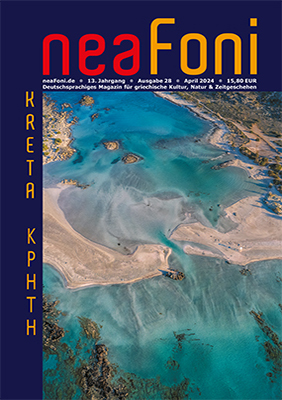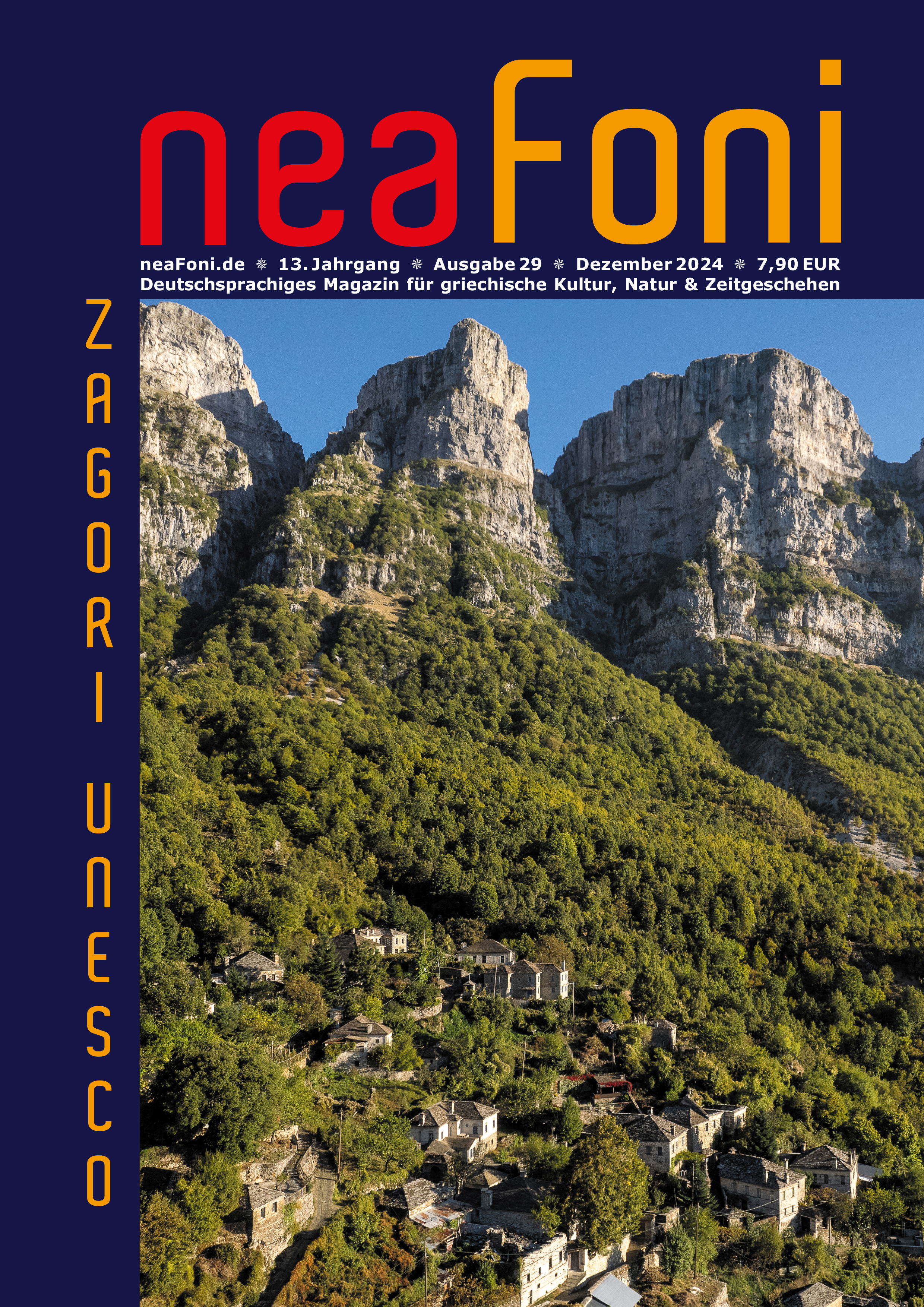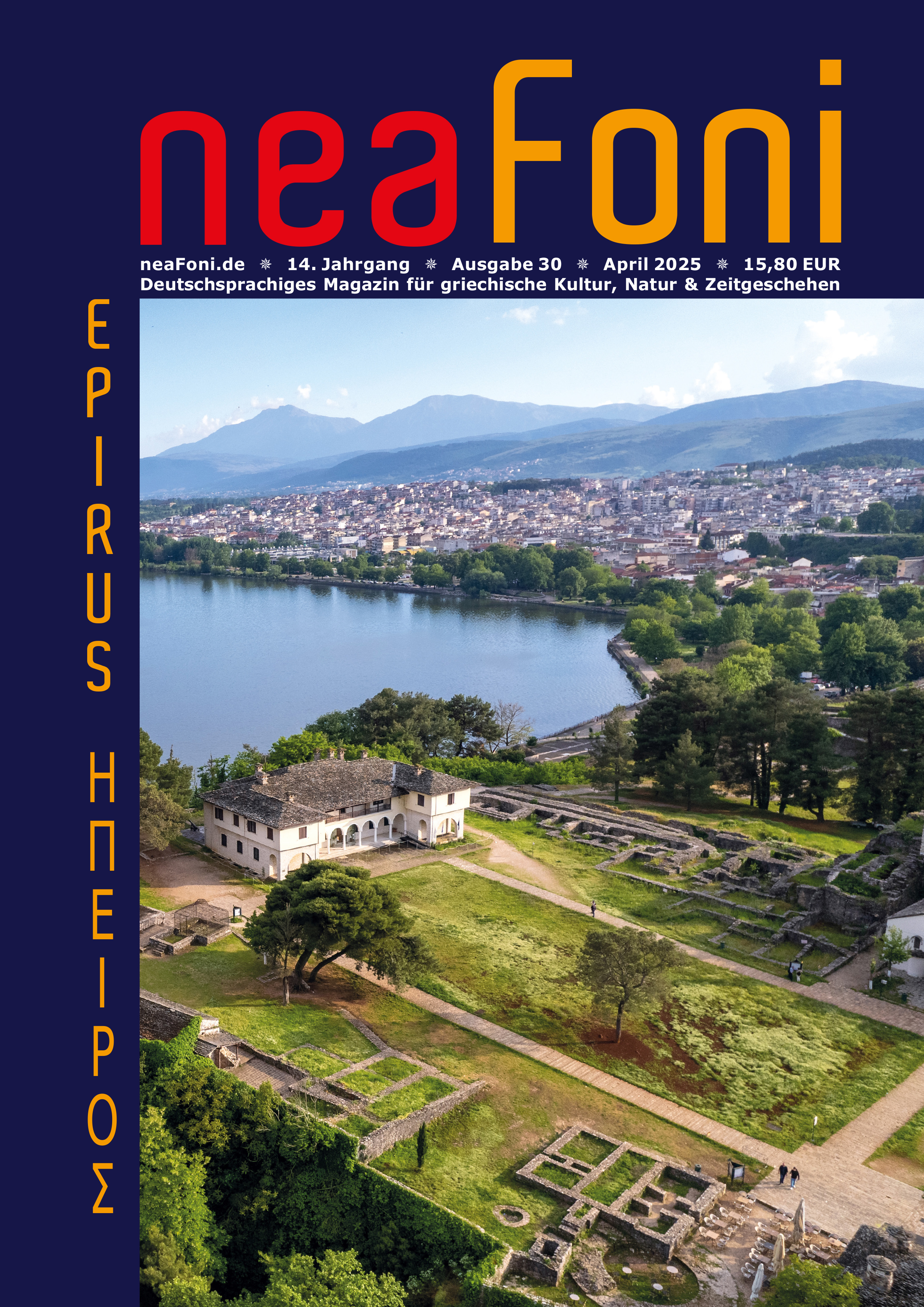Die auch in der Antike berühmte Insel Ägina ist vulkanischer Herkunft und verdankt ihre Bedeutung ihrer strategisch wichtigen geographischen Lage.
Aigina ist seit 3.500 v. Chr. ständig besiedelt, doch bekannt wird sie durch Aiakos, Sohn des Zeus und der Nymphe Ägina. Aiakos, der “Gerechte”, der Gründer der Stadt Aigina, war der Stammvater der Myrmidonen und König der Insel. Aiakos hatte zwei berühmte Söhne. Peleus, Vater des Achileus und Telamon, der König der Insel Salamis wurde.
Markstein in der antiken Entwicklung von Ägina ist die Epoche um das 7. Jh. v. Chr. Dank einer mächtigen Flotte, die das Mittelmeer durchkreuzte, um Güter in alle großen Häfen der antiken Welt zu bringen, gewann die Insel an Bedeutung. Die Ägineten prägten um 650 v. Chr. die ersten europäischen Münzen, die berühmten “silbernen Schildkröten”, was den Handel förderte und die Insel zur wichtigsten Handelsmacht machte. Am Ende des 6. Jhs. v. Chr. lebten auf Aigina 40.000 freie Bürger und 470.000 Sklaven.
Außer Handelszentrum war Ägina auch ein sehr bedeutendes Kulturzentrum. Im 7. Jh. v. Chr. lebte hier der Gründer der aiginetischen Bildhauerschule, Smilis, der die Statue der sitzenden Hera auf Samos schuf. Berühmt waren auch die Bildhauer Onatas, Kalon, Glafkias, Anaksagoras, Simon, Altimos und Aristonoos. Der Bildhauer Onatas war in ganz Griechenland berühmt, da er Werke aus Bronze für die größten Heiligtümer und Städte Griechenlads geschaffen hatte. Sein berühmtestes Werk war die Bronzenstatue des Poseidon (um 450 v. Chr.). Die wichtigsten Zeugnisse dieser aiginetischen Schule sind die Plastiken des Aphaia-Tempels. Auch viele Olympioniken stammten aus Aigina, wie die Oden des Pindar und das Werk des Pausanias bezeugen.
Olympiasieger
59. Olympiade, 544 v, Chr. Praksidamas / Boxen
76. Olympiade, 476 v, Chr. Theognitos / Ringen Kinder
79. Olympiade, 464 v, Chr. Ferias / Ringen Kinder
80. Olympiade, 460 v, Chr. Alkimedon / Ringen Kinder
84. Olympiade, 444 v, Chr. Tavrosthenis / Ringen
238. Olympiade, 173 n, Chr. Agathopous / Stadion
239. Olympiade, 177 n, Chr. Agathopous / Stadion
Zu Beginn der Persenkriege stand Aigina auf der Höhe seiner Macht. Die Ägineten kämpften bei der Seeschlacht von Salamis an der Seite der Athener mit großer Tapferkeit. Doch der Ruhm und der Reichtum zog der Insel am Ende die Rivalität und die Feindschaft Athens zu. “Der Dorn im Auge des Piräus”, wie Perikles sagte, mußte ausgeschaltet werden. Nach zwei Seesiegen zwangen die Athener die Ägineten, die Mauern ihrer Stadt niederzureißen, ihnen ihre Flotte zu übergeben und hohe Steuern zu bezahlen. 30 Talente pro Jahr, 1.100 Kilo Gold und Silber für 18 Jahre, das bedeutete den Ruin und den Niedergang der Handelsmacht Ägina einerseits und den Beginn der goldenen Epoche des Perikles und Athens andererseits.
Bis 1537 war Ägina in Vergessenheit geraten, doch in jenem Jahr taucht es durch ein erschütterndes Ereignis aus dem Dunkel der Geschichte wieder auf: Der Pirat Khayr Ad-Din Barbarossa zerstörte im türkisch-venezianischen Krieg die Insel, tötete fast alle Männer und entführte 6.000 Frauen und Kinder, um sie auf den Sklavenmärkten des Orients zu verkaufen.
Am 12. Januar 1928 wurde der griechische Traum nach vier Jahrhunderten endlich wahr. Ioannis Kapodistrias, der erste Präsident des freien Griechenlands, traf auf Ägina ein, und am 26. Januar 1928 wurde er dort vereidigt. In neoklaklassizistischem Stil wurden schöne Häuser gebaut, die bis heute zu sehen sind. Für kurze Zeit war Aigina griechische Hauptstadt, bis am 3. Oktober 1928 Nafplio als Hauptstadt gewählt wurde. 1929 wurden die ersten Münzen des neuen griechischen Staates in Ägina geprägt. Kupfermünzen im Wert von 1, 5, 10, 20 Lepta mit dem “Phoenix” auf Vorder- und Rückseite.
Heute ist Ägina mit seinen 12.000 Einwohnern eine vielbesuchte, internationale Ferieninsel geworden. Sehenswert sind die Inselhauptstadt Ägina mit ihrer antiken Stadt und dem archäologischen Museum, die mittelalterliche Stadt Paleochora, der Tempel der Aphaia und das Museum von Christos Kapralos.
Die Inselhauptstadt Ägina
Ägina ist ein kleines Hafenstädtchen, das viel mehr zu bieten hat als malerische Häuser, Cafés, Kaikia und Fischerboote. Bedeutende Baudenkmäler der Geschichte Griechenlands sind hier versammelt. Regierungsgebäude im neoklassizistischen Stil, Wohn- und Herrschaftshäuser, Wohntürme und Klöster bilden ein einheitliches architektonisches Bild das sich ganz schlicht mit der einheimischen traditionellen ägäischen Architektur verbunden hat. Die Farben, die in Ägina-Stadt überwiegen, sind warme Farben, wie Okra und Dunkelrot. Ein Spaziergang durch die schmalen labyrinthartigen Gassen der Stadt vorbei an den neoklassizistischen Häusern und der Besucher erlebt eine griechische Kleinstadt vom Ende des 19. Jahrhunderts. Die archäologische Ausgrabungstätte Kolona am Kolona-Hügel und das archäologische Museum sind Zeugen einer bedeutenden antiken Siedlung um 1.600 v. Chr.
Paleochora
Paleochora, eine der wichtigsten und bedeutendsten byzantinischen Städte, liegt auf einem Hügel und gilt als die mittelalterliche Stadt im Saronischen Golf. Gegründet wurde sie im 9. Jh. zum Schutz vor Piraten. Doch die Geschichte dieser Siedlung ging im Jahre 1537 zu Ende nach dem Überfall des berüchtigten türkischen Flottenführers Khayr Ad-Din Barbarossa. Die Kirchen, die zusammengefallenen Häuser, die steingepflasterten Gassen und die Burg bilden heute eine byzantinische Geisterstadt. Heute kann man einige Kirchen besichtigen mit schönen Wandmalereien, wie die Kreuzkuppelkirche “Taxiarchis”.
Aphaia-Tempel
Der Aphaia-Tempel, dieses Musterbeispiel antiker griechischer Architektur in dorischem Stil, ist heute der wichtigste touristische Anziehungspunkt Äginas. Der Tempel, wie er heute zu sehen ist, wurde 490 v. Chr. aus einheimischem grauen Sandstein an der Stelle eines älteren (Ende des 7. Jhs. v. Chr.) erbaut. Er ist ein Rechteck von 32 mal 16,50 m, mit einer Säulenreihe umgeben 12 mal 6 und war innen zweistöckig. Berühmt war der Giebelschmuck des Aphaia-Tempels mit den Giebelskulpturen in deren Mittelpunkt die Göttin Athena stand. Das östliche Giebelfeld zeigte Szenen vom Feldzug des Herakles und anderen Helden gegen Laomedon, König von Troja und das westliche Giebelfeld Szenen vom Feldzug der Griechen unter Agamemnon gegen die Trojaner.
Doch die Schönheit der Landschaft, der Tempel steht auf dem Gipfel eines bewaldeten Hügels, zieht viele Besucher an und bringt sie immer wieder zum Staunen über die geniale Platzwahl der Griechen für ihre Heiligtümer. Der Zauber der Landschaft ist ein Erlebnis für jeden.
Museum von Christos Kapralos
Das im Herbst 1993 auf der Insel Ägina eröffnete CHRISTOS-KAPRALOS-Museum befindet sich in der Region Plakakia, ca. 3 km vom Haupthafen der Insel entfernt.
Das Museum verfügt über sechs Räume, in denen das gesamte, auf Ägina hergestellte Werk von Kapralos ausgestellt ist: Arbeiten aus einheimischem Tuffstein, Marmor und Holz.
Christos Kapralos wurde im Jahre 1909 in Panaitolio bei Agrinio geboren. Von 1934 bis 1940 studierte er Malerei an der Kunsthochschule Athen und Bildhauerei an den Pariser Grande Chaumiere & Colarossi.
Mit seiner Gedenkkollage, einem 40 m langen Fries mit dem Titel „Mahnmal zur Erinnerung an die Schlacht von Pindos“ vermag Kapralos, den griechischen Paganismus mit der Christlichen Transzendenz und seine persönlichen Erlebnisse mit kollektiven Erfahrungen zu kombinieren. Er ist zweifellos eine der größten Persönlichkeiten der Bildhauerei des 20. Jahrhunderts. Einer jener Künstler, denen es gelingt, eine neue persönliche Deutung des Menschen und der Welt anzubieten. Seine Bronzeplastiken sind zu allgemein gültigen Symbolen avanciert, die jene urzeitlichen und gleichsam apokalyptischen Kräfte des Lebens zum Ausdruck bringen, während die in seinen letzten Lebensjahren entstandenen Arbeiten aus Eukalyptusholz sicherlich zu den eindrucksvollsten Werken ihrer Art gehören.





